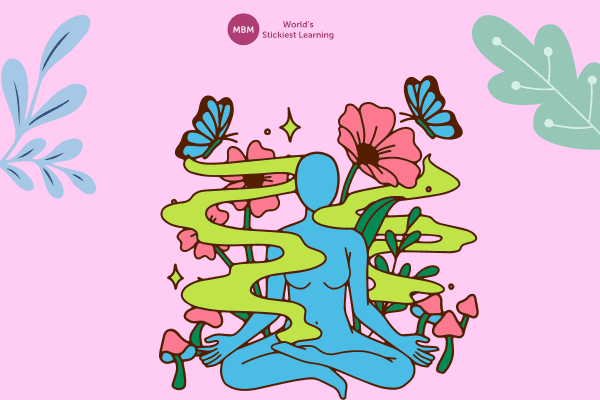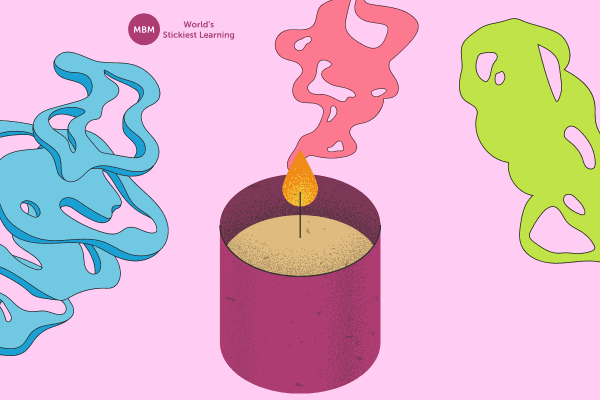Stanford and Baylor’s $43.4M Global Study Deciphers the Modern Path to Flourishing
Wellness is a buzzword that everyone seems to have an opinion about. But what does it really mean to be well? And how can we achieve it? These are some of the questions that researchers at Stanford University and Baylor University are trying to answer with their new $43.4 million Global Flourishing Study, the largest, most culturally and geographically diverse of its kind.
The study aims to measure and improve the well-being of people around the world, not just by looking at their physical health and income, but also by considering their happiness, purpose, character, and relationships.
Moreover, in this article, we will unravel the layers of what it means to thrive in the 21st century. From the roots of the wellness concept to the pivotal role it plays in our everyday lives.
Understanding Wellness

Embarking on a Wellness Journey
Wellness isn’t just about avoiding sickness. Actually, it’s about taking care of our whole selves. Imagine it like a journey where we focus on not only staying physically healthy but also nurturing our minds and emotions. Wellness is like a team of good habits – eating well, moving our bodies, and practising mindfulness – working together to create a happy and balanced life.
Different Sides of Wellness
Wellness has many sides, like pieces of a puzzle coming together. Physical wellness is like the starting point, where we keep our bodies healthy with things like good food and also exercise. Then there’s emotional wellness, where we learn to understand and handle our feelings. Mental wellness is about taking care of our minds and not being afraid to talk about our mental health. It’s like building a toolkit for a strong and happy life.
Finding Balance in Life
Understanding wellness is like learning to balance different parts of life. It’s not about doing everything perfectly but making choices that keep us healthy and happy. From dealing with stress to building good relationships, wellness is about finding the sweet spot in our lives. It’s an invitation to create a beautiful melody where wellness guides us to a life that’s full of energy and joy.

Importance of Wellness
The Significance of Wellness
Wellness is vital because it’s about more than just avoiding sickness. Additionally, it’s a way of approaching life that focuses on making it not just okay but fantastic. By prioritising wellness, we take care of not only our physical health but also our mental and emotional well-being, creating a foundation for a fulfilling life.
Holistic Well-being: A Vital Goal
The heart of wellness lies in achieving a state where both our minds and bodies thrive. It goes beyond merely not being sick; it’s about building strength, mental clarity, and emotional resilience. When we embrace wellness, we equip ourselves with the tools needed to face each day with energy and clear thinking.
Integrated Wellness Strategies
Wellness isn’t a solo effort but a combination of smart habits working together. Consequently, choosing nourishing food, engaging in activities that keep us physically active, and taking moments to relax all contribute to a well-rounded strategy. In essence, it’s like having a team of elements that work together to enhance our overall health and well-being.
Wellness as the Catalyst for a Fulfilling Life
Understanding the significance of wellness is like uncovering a secret to a satisfying and meaningful life. Moreover, when we care for ourselves physically, mentally, and emotionally, we gain the tools to handle challenges, build connections, and savour good moments. In essence, wellness is the key to unlocking a life filled with energy, resilience, and also a deep sense of well-being.
Holistic Health Practices

1. Understanding Mindful Wellness
Holistic health practices revolve around cultivating a harmonious balance between the physical, mental, and also spiritual aspects of well-being. An impactful approach is to introduce mindfulness into your daily routine. Consequently, simple practices, such as focused breathing exercises or guided meditation, can enhance awareness and mental clarity. Therefore, take 5 minutes each day for mindfulness, gradually increasing the duration to suit your comfort level.
2. Prioritising Sleep
Amidst life’s demands, prioritising rest and quality sleep are paramount for holistic well-being. Consequently, establish a calming bedtime routine, optimise your sleep environment, and aim for 7-9 hours of sleep per night. Notably, quality sleep positively impacts physical health, cognitive function, and also emotional resilience. Moreover, consider a digital detox before bedtime, turning off electronic devices at least an hour before sleep, and promoting a restful and rejuvenating night’s sleep.
3. Implementing Holistic Health Practices
1. Mindful Moments:
To start, dedicate 5 minutes daily to mindfulness exercises, gradually extending the duration to suit your comfort.
2. Nutrient-rich Choices:
Plan meals with a variety of colourful fruits, vegetables, and whole grains. Also, experiment with new, healthy recipes to keep meals exciting.
3. Move Your Way:
Identify enjoyable physical activities, committing to at least 30 minutes of moderate exercise most days. This could include dancing, hiking, or yoga.
4. Sleep Sanctuary:
Establish a calming bedtime routine, dim lights, and avoid screens. Ensure your bedroom promotes sleep with a comfortable mattress and a cool, dark environment.
5. Hydration Habit:
Drink an adequate amount of water daily. Carry a reusable water bottle to make hydration convenient and track your intake.
6. Screen Breaks:
Incorporate regular breaks from screens throughout your day. Stretch, walk, or practice deep breathing during these breaks to refresh your mind and reduce eye strain.
7. Mindful Breathing:
Integrate mindful breathing exercises into your routine. Take a few moments to focus on your breath, inhaling and exhaling slowly to promote relaxation.
8. Gratitude Practice:
Cultivate a daily gratitude habit. Take time to reflect on and also appreciate the positive aspects of your life, fostering a positive mindset.
9. Social Connection:
Prioritise meaningful social interactions. Schedule regular catch-ups with friends or family, fostering a sense of connection and support.
10. Digital Detox Day:
Designate one day a week for a digital detox. Disconnect from electronic devices to recharge and also engage in offline activities that bring you joy.
Nutrition and Wellness

1. Understanding the Nutrition-wellness Nexus
Exploring the intricate link between nutrition and wellness reveals a dynamic interplay where dietary choices significantly impact overall health. Furthermore, beyond mere sustenance, nutrition serves as a cornerstone for a holistic approach to well-being, influencing physical vitality, mental clarity, and longevity. Therefore, unveiling this connection is essential for cultivating a lifestyle that not only nourishes the body but also supports a thriving and balanced existence.
2. The Role of Nutrition in Promoting Health
Nutrition also plays a pivotal role in promoting health by providing the body with the essential building blocks it needs to function optimally. Moreover, a nutrient-rich diet, featuring a diverse array of colourful fruits and vegetables, lean proteins, whole grains, and healthy fats, contributes to robust immune function, sustained energy levels, and the prevention of chronic diseases.
Additionally, understanding the nutritional value of foods empowers individuals to make informed choices that align with their wellness objectives, fostering a proactive approach to health maintenance.
3. Crafting a Wholesome Plate
Building a wholesome plate involves not only diversity but also mindful choices. Consider adopting a “farm-to-table” mindset, prioritising fresh, locally sourced produce when available. Experiment with plant-based proteins, such as legumes and nuts, to diversify nutrient intake. Furthermore, incorporate ancient grains, like quinoa or farro, for added nutritional benefits. This approach ensures a broader spectrum of essential nutrients, contributing to a well-rounded and also satisfying diet that goes beyond the basic requirements.
4. Implementing Nutritional Practices
1. Colorful Variety:
Firstly, aiim for a diverse array of colours on your plate, indicating a rich mix of vitamins and antioxidants. Explore different fruits and vegetables regularly to maximise nutritional benefits.
2. Protein Diversity:
Diversify protein sources by incorporating plant-based options like lentils, beans, or tofu. This not only broadens nutrient intake but also supports sustainable and ethical dietary choices.
3. Mindful Hydration:
Beyond water intake, incorporate hydrating foods like watermelon, cucumber, and celery into your diet. These contribute to overall hydration while adding nutritional value.
4. Culinary Exploration:
Expand your culinary horizons by experimenting with herbs, spices, and also healthy cooking techniques. Enhance flavours without relying on excessive salt or unhealthy fats, creating delicious and nutritious meals.
Physical Fitness and Wellness

1. Understanding the Significance of Exercise
Regular exercise is a cornerstone of overall wellness, impacting not only physical health but also mental well-being. Beyond the quest for a sculpted physique, exercise is a powerful tool that contributes to the prevention of chronic diseases, improved cardiovascular health, and enhanced longevity. Thus, delving into the significance of exercise unveils a multitude of benefits that extend far beyond the confines of the gym, shaping a holistic approach to well-being.
2. Physical Health Benefits of Regular Exercise
Engaging in regular physical activity is linked to numerous health benefits. Firstly, it strengthens the cardiovascular system, promoting efficient blood circulation and also reduces the risk of heart disease. Furthermore, exercise plays a pivotal role in maintaining a healthy weight, regulating blood pressure, and improving bone density. Additionally, it supports the immune system, reducing the likelihood of illness. Understanding these physical health advantages underscores the importance of incorporating regular exercise into one’s lifestyle.
3. Mental Well-being: The Positive Influence of Exercise
The positive impact of exercise extends to mental well-being, acting as a potent stress reliever and mood enhancer. Additionally, physical activity stimulates the release of endorphins, the body’s natural mood lifters, fostering a sense of euphoria and well-being. Moreover, regular exercise is also associated with improved sleep quality, enhanced cognitive function, and a reduced risk of mental health disorders. By comprehending the intricate link between physical activity and mental wellness, individuals can harness the transformative power of exercise for a more balanced and resilient mind.
4. Implementing Exercise Practices
1. Find Enjoyable Activities:
To begin, engage in physical activities you enjoy, whether it’s dancing, hiking, swimming, or team sports. Enjoyment increases the likelihood of making exercise a consistent part of your routine.
2. Create a Realistic Routine:
Establish a realistic exercise routine that fits your schedule and preferences. Remember that consistency matters more than intensity. So find a balance that works for you, whether it’s short daily walks or more structured gym sessions.
3. Mix Cardiovascular and Strength Training:
Combine cardiovascular exercises like walking, running, or cycling with strength training. This dual approach maximises physical health benefits, including improved endurance, muscle strength, and also flexibility.
4. Prioritise Mindful Movement:
Integrate mindful movement practices, such as yoga or tai chi, into your routine. These activities not only enhance physical well-being but also contribute to mental clarity and stress reduction.
Social Wellness

1. Understanding the Impact of Social Connections
Social wellness plays a pivotal role in maintaining a balanced and fulfilling life, emphasising the profound impact of relationships, community, and social support on overall well-being. Beyond the individual pursuit of health, the quality of our social connections also influences our mental and emotional states, contributing to a sense of belonging, purpose, and resilience.
2. The Role of Relationships in Well-being
Building and nurturing positive relationships is a cornerstone of social wellness. Meaningful connections with friends, family, and community members provide emotional support, reduce stress and also enhance mental well-being. Cultivating healthy relationships involves effective communication, empathy, and mutual respect. Recognising the reciprocal nature of positive social interactions underscores their impact on personal happiness and the creation of a supportive social network.
3. Community Engagement for a Balanced Life
Active participation in a community contributes significantly to social wellness. Moreover, involvement in local groups, clubs, or volunteer activities fosters a sense of connection and shared purpose. Additionally, community engagement provides opportunities for personal growth, expands social networks, and establishes a sense of belonging. Furthermore, recognising the importance of contributing to a larger collective reinforces the idea that social wellness extends beyond individual relationships to the broader community context.
4. Implementing Social Wellness Practices
1. Cultivate Meaningful Relationships:
Firstly, invest time in building and nurturing positive relationships. Prioritise quality over quantity, fostering connections that bring joy, understanding, and support.
2. Practice Active Listening:
Enhance communication within relationships by practising active listening. This involves fully focusing on what the other person is saying without distractions, fostering deeper connections.
3. Engage in Community Activities:
Explore local community groups, clubs, or volunteering opportunities. Participation in shared activities not only broadens social circles but also contributes to a sense of shared purpose and fulfilment.
4. Digital Boundaries:
While technology connects us, it’s essential to establish boundaries for a healthy balance. Allocate dedicated time to connect face-to-face with friends and family, reinforcing the richness of in-person interactions.
Wellness at Work

1. Understanding the Importance of Workplace Wellness
Wellness at work is not just a buzzword. Actually, it’s a crucial element for creating a supportive and thriving work environment. Recognising the significance of employee well-being goes beyond conventional benefits packages; it involves cultivating a culture that values employees’ holistic well-being. This includes not only physical health but also mental, emotional, and social aspects. All in all, a workplace that prioritises wellness not only attracts top talent but also fosters higher job satisfaction, productivity, and overall employee happiness.
2. Google: A Pioneer in Workplace Wellness
Google stands as a paradigm of workplace wellness, exemplifying the transformative effects of prioritising employee well-being. Beyond traditional benefits, Google’s comprehensive wellness programs span physical, mental, and emotional dimensions, offering on-site fitness centres, mindfulness programs, and mental health support.
The company champions flexible work arrangements, empowering employees to manage their schedules for optimal work-life balance. Google’s innovative workspaces, designed with vibrant and nature-inspired elements, contribute to a positive and rejuvenating atmosphere. This holistic approach showcases that investing in employee wellness is not merely a perk at Google but a strategic imperative, fostering a workplace culture that attracts top talent, enhances job satisfaction, and ultimately contributes to sustained success.
3. Prioritising Mental Health in the Workplace
Wellness at work also entails placing a strong emphasis on mental health. Additionally, recognise and destigmatise mental health challenges by promoting awareness and offering resources. Moreover, provide access to confidential counselling services, encourage regular breaks to reduce stress, and create spaces where employees can recharge their minds. Understanding that prioritising mental health contributes not only to individual well-being but also to a more positive and productive work environment is crucial.
4. Implementing Workplace Wellness Practices
1. Wellness Programs:
to start, initiate and support workplace wellness programs that cater to various aspects of well-being. Include fitness challenges, mental health workshops, and social events to foster a holistic approach.
2. Flexible Work Arrangements:
Whenever feasible, offer flexible work arrangements to accommodate different needs. This can include flexible hours, remote work options, or compressed work weeks.
3. Encourage Breaks:
Promote a culture that values breaks as essential for well-being. Encourage employees to take short breaks throughout the day, fostering mental refreshment and preventing burnout.
4. Mental Health Resources:
Provide access to mental health resources, such as counselling services or workshops. Create a supportive environment that encourages open conversations about mental well-being.
Mind-body Connection
The mind and body are not separate entities, but rather interconnected parts of a whole system that influences each other in various ways. The mind-body connection refers to the relationship between our mental and physical well-being, and how we can use this connection to promote health and happiness.
One way to explore the mind-body connection is to practice activities that foster a harmonious balance between the two. Some examples of such activities are:
-
Art therapy:
First off, this is a form of expressive therapy that uses the creative process of making art to improve a person’s physical, mental, and emotional well-being. Art therapy can help people cope with stress, trauma, grief, depression, anxiety, and other psychological issues. It can also enhance self-awareness, self-esteem, and communication skills. Art therapy can involve various forms of art, such as painting, drawing, sculpting, collage, photography, and music.
-
Reiki:
Now this is a form of energy healing that originated in Japan. Reiki practitioners use their hands to channel universal life force energy to themselves or others. It can help balance the energy flow in the body, promote relaxation, reduce pain, and support healing. Reiki can also enhance spiritual awareness and connection.
-
Hypnosis:
This is a state of focused attention and heightened suggestibility that can be induced by a trained therapist or by oneself. Hypnosis can help people access their subconscious mind and make positive changes in their thoughts, feelings, and behaviours. Hypnosis can be used for various purposes, such as quitting smoking, losing weight, overcoming phobias, improving performance, and managing pain.
Conclusion
In summary, fostering wellness, as exemplified by companies like Google, not only enhances individual satisfaction and productivity but also creates a culture of sustained success. By prioritising physical, mental, and social well-being, individuals and organisations can cultivate a more fulfilling and balanced life. Therefore, implementing the actionable strategies outlined here becomes a blueprint for personal growth and resilience, contributing to a vibrant sense of living.




